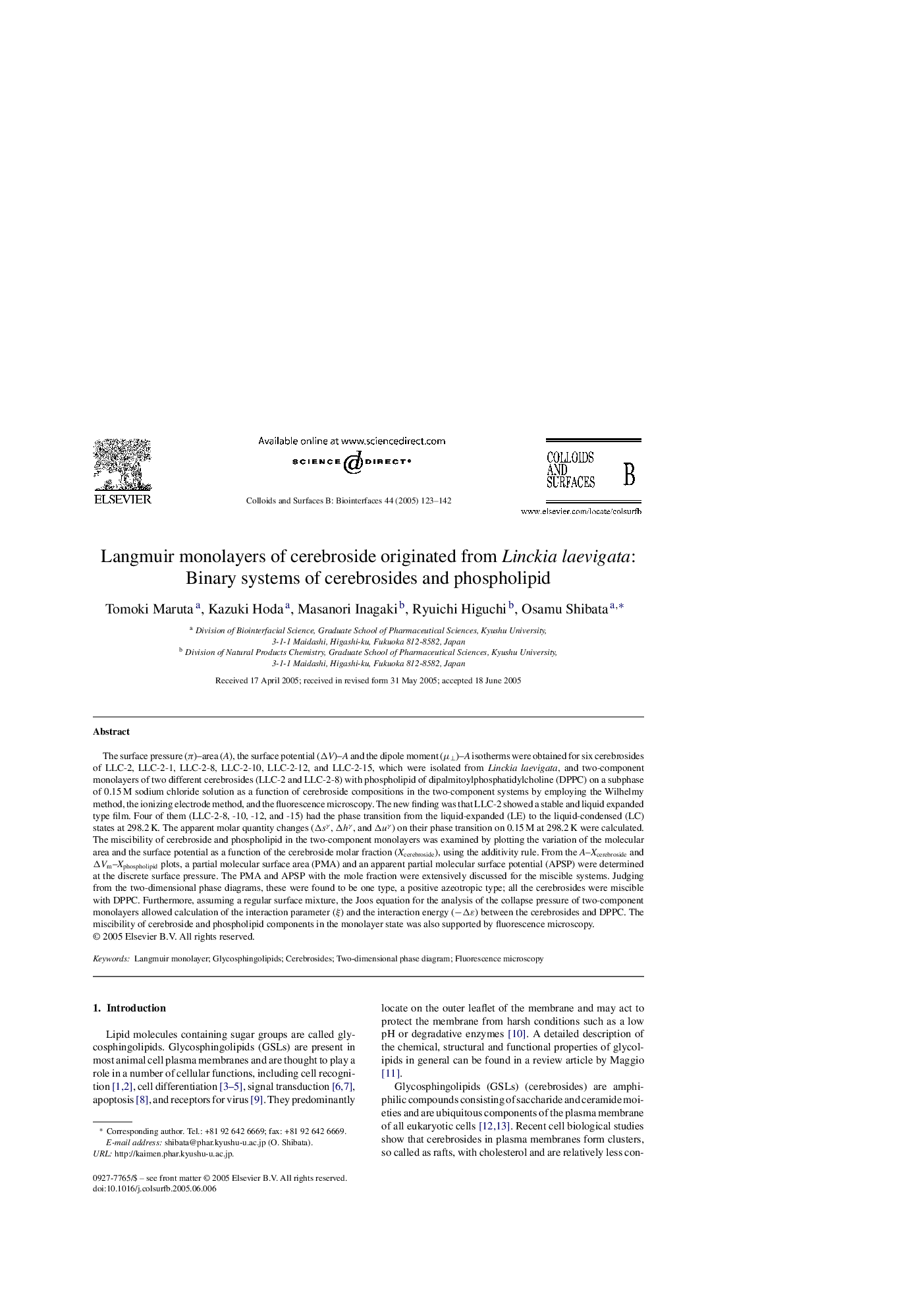| Article ID | Journal | Published Year | Pages | File Type |
|---|---|---|---|---|
| 9678341 | Colloids and Surfaces B: Biointerfaces | 2005 | 20 Pages |
Abstract
The surface pressure (Ï)-area (A), the surface potential (ÎV)-A and the dipole moment (μâ¥)-A isotherms were obtained for six cerebrosides of LLC-2, LLC-2-1, LLC-2-8, LLC-2-10, LLC-2-12, and LLC-2-15, which were isolated from Linckia laevigata, and two-component monolayers of two different cerebrosides (LLC-2 and LLC-2-8) with phospholipid of dipalmitoylphosphatidylcholine (DPPC) on a subphase of 0.15 M sodium chloride solution as a function of cerebroside compositions in the two-component systems by employing the Wilhelmy method, the ionizing electrode method, and the fluorescence microscopy. The new finding was that LLC-2 showed a stable and liquid expanded type film. Four of them (LLC-2-8, -10, -12, and -15) had the phase transition from the liquid-expanded (LE) to the liquid-condensed (LC) states at 298.2 K. The apparent molar quantity changes (Îsγ, Îhγ, and Îuγ) on their phase transition on 0.15 M at 298.2 K were calculated. The miscibility of cerebroside and phospholipid in the two-component monolayers was examined by plotting the variation of the molecular area and the surface potential as a function of the cerebroside molar fraction (Xcerebroside), using the additivity rule. From the A-Xcerebroside and ÎVm-Xphospholipid plots, a partial molecular surface area (PMA) and an apparent partial molecular surface potential (APSP) were determined at the discrete surface pressure. The PMA and APSP with the mole fraction were extensively discussed for the miscible systems. Judging from the two-dimensional phase diagrams, these were found to be one type, a positive azeotropic type; all the cerebrosides were miscible with DPPC. Furthermore, assuming a regular surface mixture, the Joos equation for the analysis of the collapse pressure of two-component monolayers allowed calculation of the interaction parameter (ξ) and the interaction energy (âÎÉ) between the cerebrosides and DPPC. The miscibility of cerebroside and phospholipid components in the monolayer state was also supported by fluorescence microscopy.
Keywords
Related Topics
Physical Sciences and Engineering
Chemical Engineering
Colloid and Surface Chemistry
Authors
Tomoki Maruta, Kazuki Hoda, Masanori Inagaki, Ryuichi Higuchi, Osamu Shibata,
